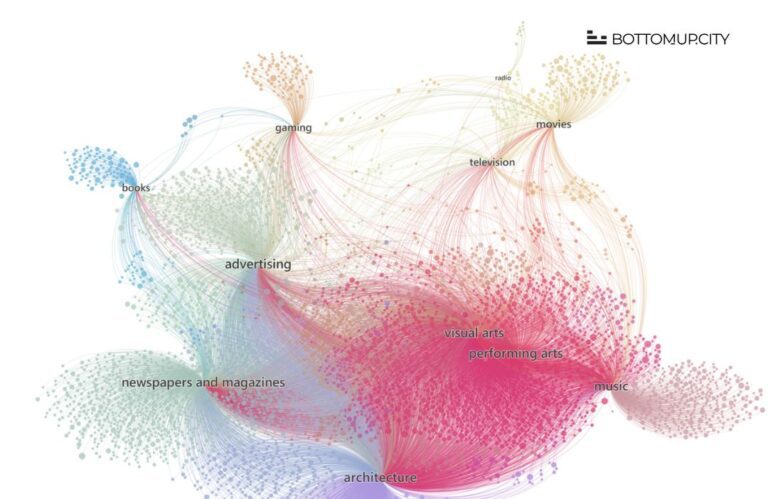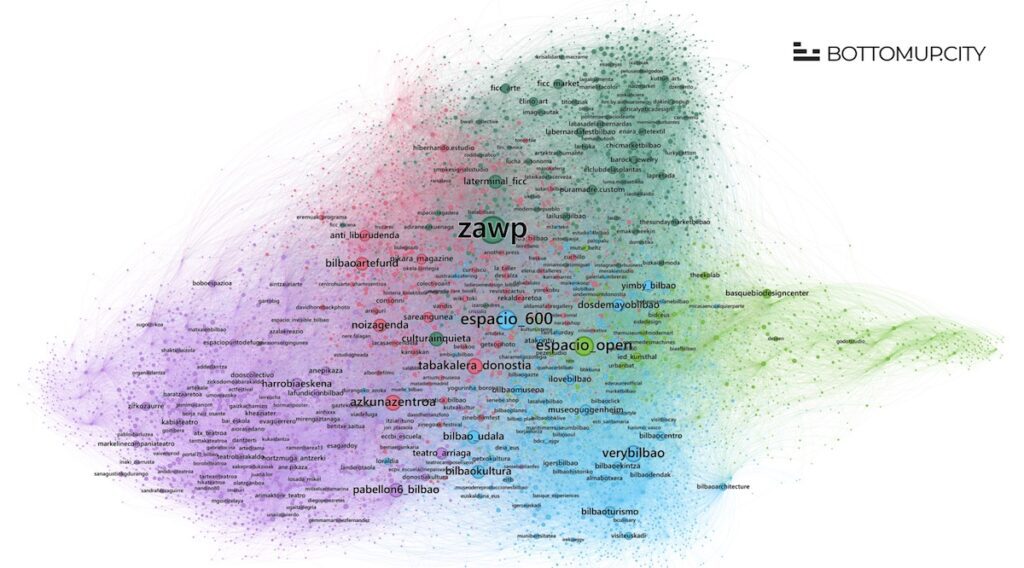Everything happens somewhere, even when we cannot see it. This is one of the things I leave with as I finish my conversation with Andreas Putlitz, from Bottom-Up City. We have spent the last hour or so recording our discussion on geosocial data, T-Factor’s Bilbao pilot, and how we can measure the impact of temporary use.
Alongside Sina Mertens, Andreas is one of the founders of Bottom-Up City, a Dortmund-based start-up that unearths the invisible strings of the city using geosocial data. It looks at the patterns of text in social media posts and pairs them with geographic data, i.e. maps, to reveal opinions, social dynamics, and social change across space and time. Without getting too much into tech-speak, the gist of it is as follows: This start-up mines publicly available social media data and using algorithms and machine learning methods, they develop concepts for digital participation and communication, impact measurement, and ecosystem development.
Andreas collaborated with Bilbao as part of the supporting activities T-Lab 6 had with them. We onboarded him and Sina to offer our colleagues at Bilbao a new perspective in their journey to tackle one of their missions in the T-Factor project: Forming an innovation ecosystem and striving towards collaborative governance.
When we invited Bottom-Up City to collaborate with us, T-Lab 6 and Bilbao already had a glimpse into the size of the challenge ahead. One of the biggest topics at the beginning of the pilot was how we could help Zorrotzaurre Island spark connections between actors that are seemingly close, and yet by virtue of external pressures, feel far from each other. These actors, primarily members of the creative and cultural industries, are subject to great deals of uncertainty due to the nature of the regeneration process, which makes it challenging for them to come together as a single unit–a must-have in an innovation ecosystem, not to mention the bedrock of collaborative governance. Bringing Sina and Andreas to the mission was an exercise in showing this community of creatives the connections that are not so readily visible, as well as the reach of their activities.
You can have a look at the results here.

Bottom-Up City’s method of analyzing social change through Big Data and geoscience technologies can be a powerful tool in the context of the meantime. It allows city-makers to track how a place evolves over time, even when it phases out of existence or when there is not enough documentation about it. Because, even when a place is gone or seemingly unperceived, thoughts about it do not. They are reflected on the Internet. Bottom-Up City capitalizes on the archiving effect of social media to shine a light on how transitions unfold. On what was there, what remains, and what the future could be. However, there are many factors that must go into consideration to produce meaningful results. From data sources to hash-tags to the interpretation of correlations and causality, using geosocial data to read the lay of the land is a complex process. So, I sat down with Andreas to talk about Bottom-Up City’s method and what we learned with it in regards to Bilbao.
In this 40-minute podcast, Andreas walks us through the process of analyzing geosocial data and how it is used to inform novel methods of city-making. We talk about why geosocial data is useful to track cultural and creative industries–the fact that as they emerge, their process is not always documented on paper but it is documented through users of the space. We discuss the experience with Bilbao’s ecosystem of creatives and how the results of the analysis help understand the social capital that exists in the island. And, we also reflect on how the impact of temporary things can be seen using this method.
For anyone deep in the trenches of placemaking, this is definitely a treat (and a great way to spend your commute to the office, the meeting, the studio, the classroom, or wherever you are headed!) If your curiosity is piqued by how we can power urban innovation through the analysis of Big Data, how we can activate communities with it, or how we can put a pin on the map on things that seem ephemeral, press play.
Authors: Alejandra Castro Giron
